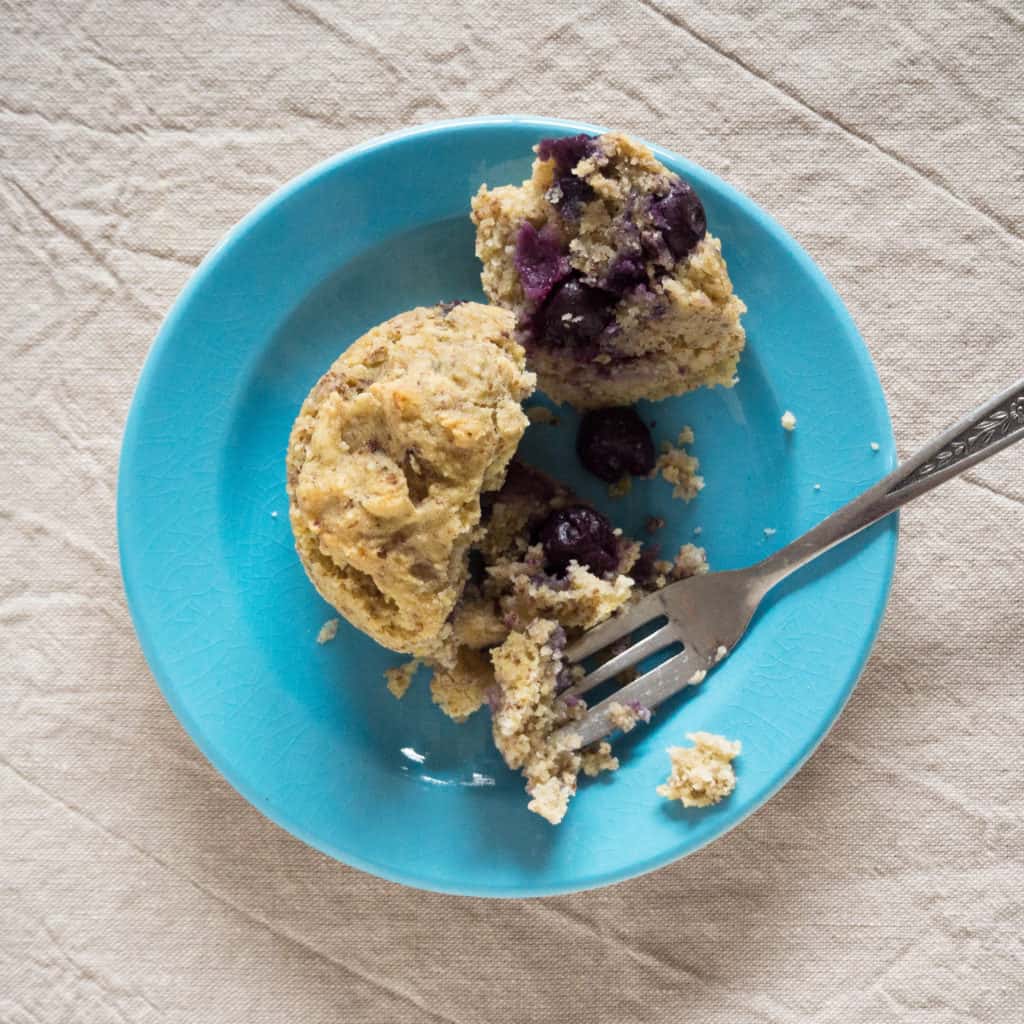
Blueberry Polenta Muffins are brilliant because:
a) they are easy-peasy
b) you can make them with sweet, popping with flavour, seasonal blueberries
c) you can make them with frozen blueberries when you want the sun to shine on you in December.
I have very fond memories of walking through masses and masses of tiny, bursting with sweet goodness, wild blueberries in Southern Germany. Wild blueberries are a very delicious treat on a lovely, long walk.
Blueberry Polenta Muffins are easy to make and can be baked in a standard muffin tin.
Find the full Blueberry Polenta Muffin recipe here.
If you are feeling particularly decedent serve the Blueberry Polenta Muffins with Summer Lemon Sorbet!
Ground flaxseeds, polenta and buckwheat flour are available in many supermarkets and can be bought online.
Preparation
Difficulty easy
Preparation time 10 minutes
Cooking time 35-40 minutes
Find the full Blueberry Polenta Muffin recipe here.
Allergens
Blueberry Polenta Muffins are gluten-free and vegan as well as…
Celery free
Coconut free
Garlic free
Lupin free
Mustard free
Nightshade free
Onion free
Peanut free
Sesame free
Soya free
About
When is a blueberry not a blueberry? When it is a bilberry. Blueberries and bilberries look very similar, they are both a dark bluey, purple, but bilberries are smaller. Both blueberries and bilberries are of the genus vaccinium. The genus also includes cranberries. Blueberries are native to north America and Bilberries are native to northern Europe.
Blueberries were the original ‘superfood’, whatever that means. Blueberries are low in calories; a 100 gram serving of blueberries provides 57 kilo-calories. Blueberries contain negligible amounts of micronutrients and moderate levels (relative to respective RDA) of manganese, vitamin C, vitamin K and dietary fibre. There are claims that blueberries can help protect against heart disease, some cancers as well as improve your memory. None of these claims has been substantiated. However, that doesn’t mean you should not eat blueberries. They are a reasonable source of some nutrients but they are not magic!
Blueberries/ bilberries are particularly popular in cakes an muffins and also as a breakfast topping on porridge or cereal. Blueberries freeze really well and are a great freezer staple. They are also delicious dried.
Polenta (AKA cornmeal) is a very useful gluten-free baking ingredient. Polenta is made by drying and grinding corn into flour, or meal (different textures from fine to coarse). The type of corn used and the processing will affect the end colour of the meal of flour. For example polenta has a rich yellow, yolk-like colour, and has a slightly sweet flavour whereas cornmeal can vary from very light to rich yellow in colour and from rich to little flavour. Polenta is a fabulously useful baking ingredient as well as making wonderful sides such as polenta chips, corn bread and porridge.
Buckwheat is also a rather misleading name. It is not related to wheat and contains no gluten. Buckwheat (fagopyrum esculentum) is not a grass (as wheat is), it is related to sorrel, knotweed, and rhubarb. Buckwheat is also known as Japanese buckwheat and beach wheat.
Buckwheat seeds are rich in complex carbohydrates and it is often referred to as a pseudocereal. The cultivation of buckwheat declined sharply in the 20th century with the adoption of nitrogen fertiliser that decreased the yield of buckwheat and increased the productivity of other staples.
A 100 gram serving of buckwheat provides 343 kilo-calories dry or 92 kilo-calories cooked. Buckwheat is a good source of protein (20% + RDA), dietary fibre, four B vitamins and several dietary minerals. Content is especially high in niacin, magnesium, manganese and phosphorus (47 to 65% RDA).
Buckwheat is especially popular in Asia and eastern Europe. In Japan buckwheat (soba) noodles are very popular. In eastern Europe buckwheat is used to make blini and other types of pancake. Buckwheat is incredibly versatile and can also be used to make beer, whiskey and tea.